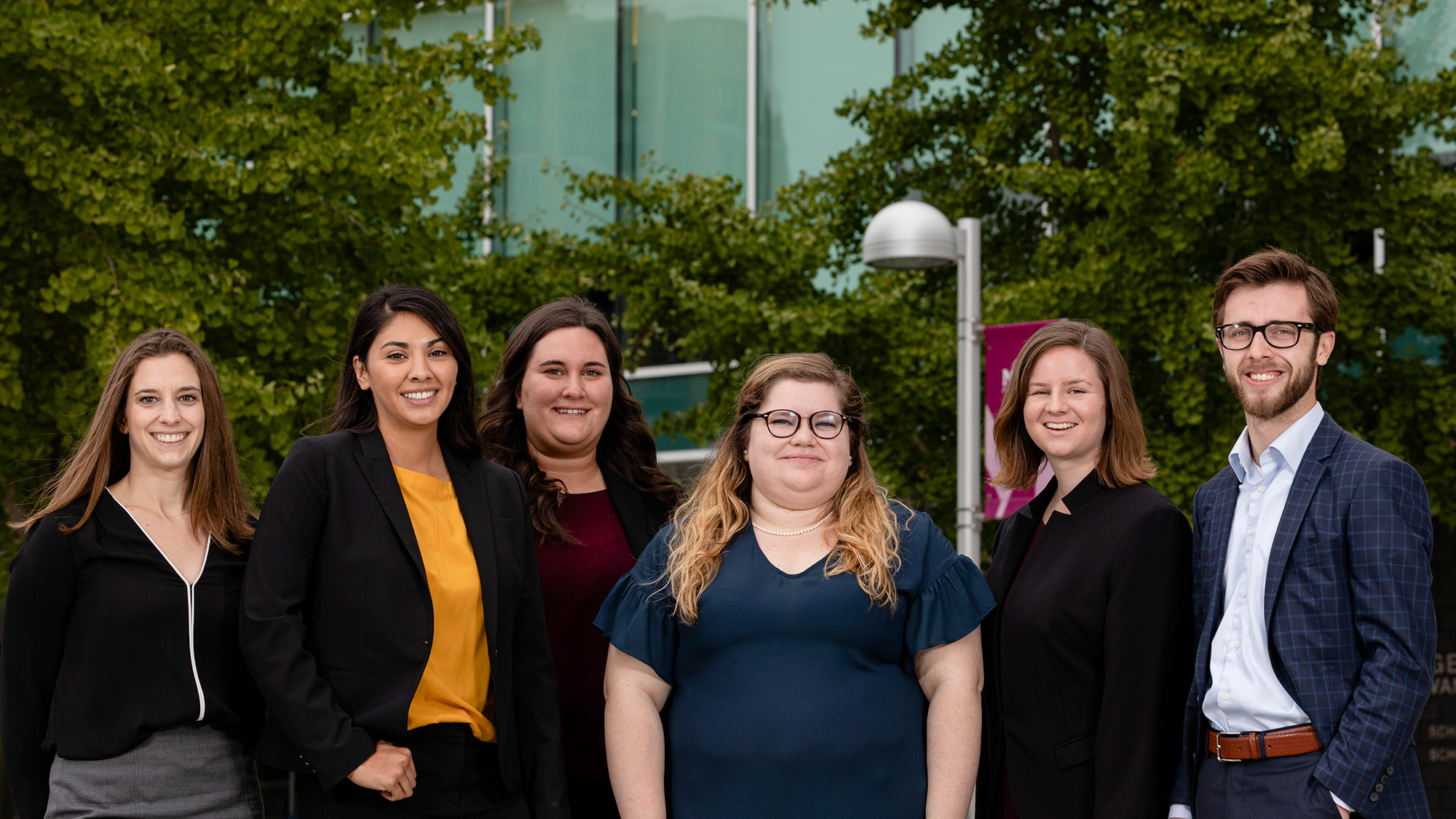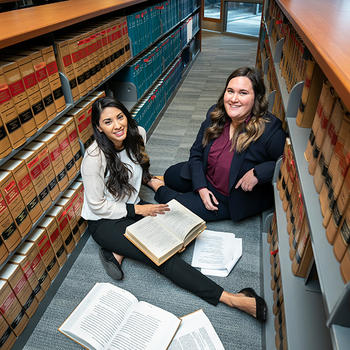Six students at George Mason University’s Antonin Scalia Law School are participating in the school’s new Immigration Litigation Clinic and advocating for clients facing a range of complex immigration proceedings.
“For the students, the goal is to teach them how to actually be an immigration litigator,” said Simon Sandoval-Moshenberg, co-professor of the year-long clinic with the Immigration Litigation Clinic’s director Becky Wolozin.

On the legal services side, it also allows the Legal Aid Justice Center’s Immigrant Advocacy Program, where Sandoval-Moshenberg is legal director, to assist more people with the students’ work, he said.
In pairs, Mason students are assigned cases where they represent immigrant clients who need legal assistance. Working on asylum applications, completing legal research, gathering case evidence, attending dockets and representing clients at immigration court are all part of the experience.
This semester, third-year law students Samanta Martinez-Villarreal and Emily Ahdieh worked with a client who was detained in an immigration detention center, and are now working on an asylum application for another client. Other students are representing a woman in deportation proceedings who was the victim of human trafficking as a child, and they have prepared her asylum applications.
“It’s one thing to discuss policy and theory in a classroom, and it’s quite another to actually get up there and practice it,” said Martinez-Villarreal, who successfully got her client out on bond with Ahdieh. “We will debate policy all day in classes, but we have to keep in mind that there are actual people on the other side of those policies and they impact people in a real way.”

The most rewarding part of the clinic so far for Martinez-Villarreal is knowing she helped her client reunite with his family, she said.
“His life was determined by how well we did in five minutes [of arguing the case],” Martinez-Villarreal said.
But the outcomes of working on real cases isn’t always so fortunate, Sandoval-Moshenberg said.
“Inevitably we’re going to lose a bunch of cases and that’s part of the experience as well,” Sandoval-Moshenberg said.
Part of being a lawyer is that you go down a lot of dead ends, Sandoval-Moshenberg said, and that’s why working with clients gives students an even greater experience base than going through a mock trial that’s designed to be winnable.
The learning process itself is challenging, as immigration laws and enforcement rapidly change in the United States.
“Immigration in the past two and a half years has been probably the fastest changing area of practice that could possibly exist,” Sandoval-Moshenberg said, adding that it’s typical for students’ reading assignments to change daily as new policies take effect. “We’re really looking at the cutting edge [research] of the latest administration changes to asylum law.”
With all the challenges, the clinic gives students insight into what it actually takes to be an immigration lawyer.
“I thought it’d be interesting to do work on immigration because it is how I ended up here,” said Martinez-Villarreal, an Idaho native who said both her parents were immigrants from Mexico. “[The clinic] has taught me more and more about being an attorney, how court proceedings actually work, how to read the rules and figure out how each [part of the litigation process] works.”
